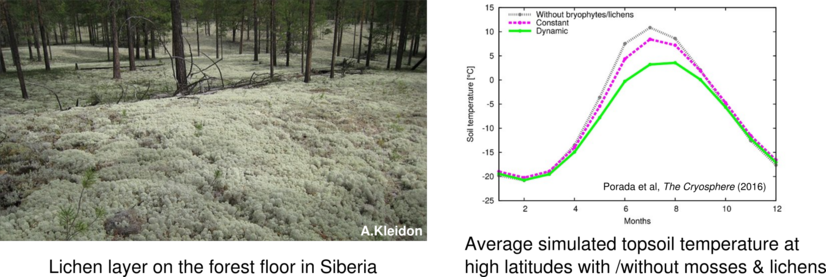Research
Non-vascular vegetation
Non-vascular vegetation (lichens, mosses, algae, and cyanobacteria) is relatively little researched, but probably plays an important role in global biogeochemical cycles, such as the carbon cycle or the hydrological cycle. It is largely unclear which effects climate change will have on the functioning of non-vascular vegetation in different ecosystems. We combine experimental methods from the plant and geosciences with a unique, dynamic vegetation model to quantify the effects of these organisms on biogeochemical processes.

Ecosystem services and biodiversity
The worldwide loss of biodiversity caused by various human activities is receiving increasing attention. However, it is not well understood how biodiversity is related to different ecosystem services that are essential to human society. We therefore develop novel models based on numerous processes of plant physiology, population dynamics and macroecology, which can be applied from the local to the global scale. Also non-vascular vegetation provides important ecosystem services, such as insulation of permafrost soils at high latitudes in summer, which may lead to protection against thawing.

Vegetation and climate
Changes in climate, such as more frequent droughts or warmer summers, can have a major impact on the distribution of vegetation types. But how do these changes in vegetation affect the climate? There is great uncertainty concerning the role of vegetation in global climate change in the coming decades. Moreover, it is largely unknown how vegetation - in particular the first land plants - could have influenced the evolution of global climate in early geological history. We examine these open questions with innovative model approaches of varying complexity. A key process in this regard is the enhancement of weathering rates of soil minerals through vegetation, which may reduce atmospheric CO2 content over long periods of time (hundreds of thousands of years) and thus cool global climate.

